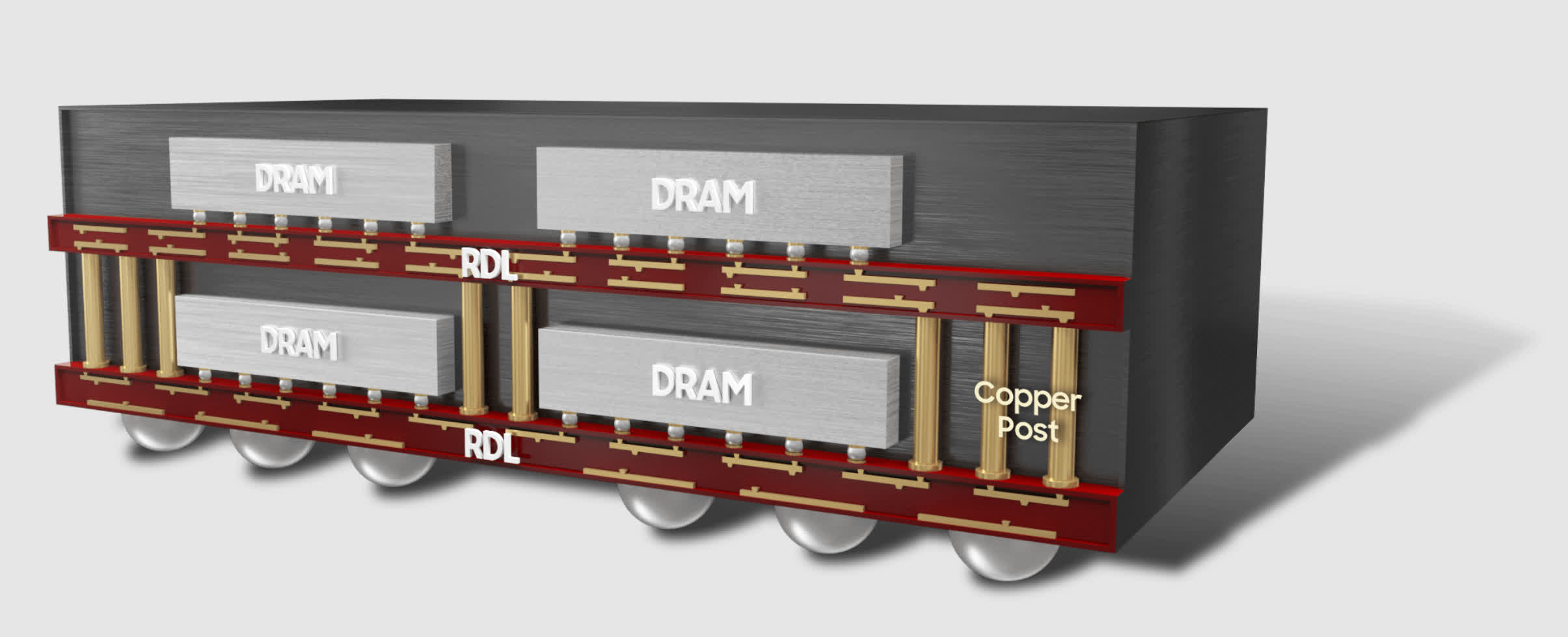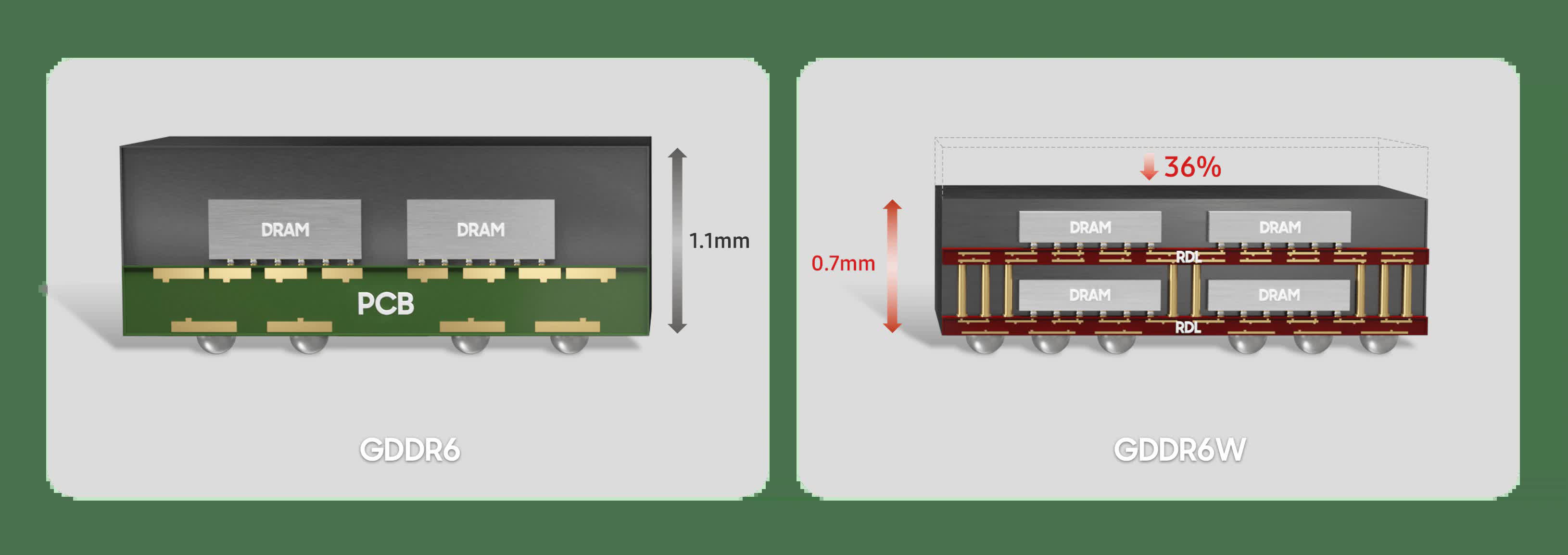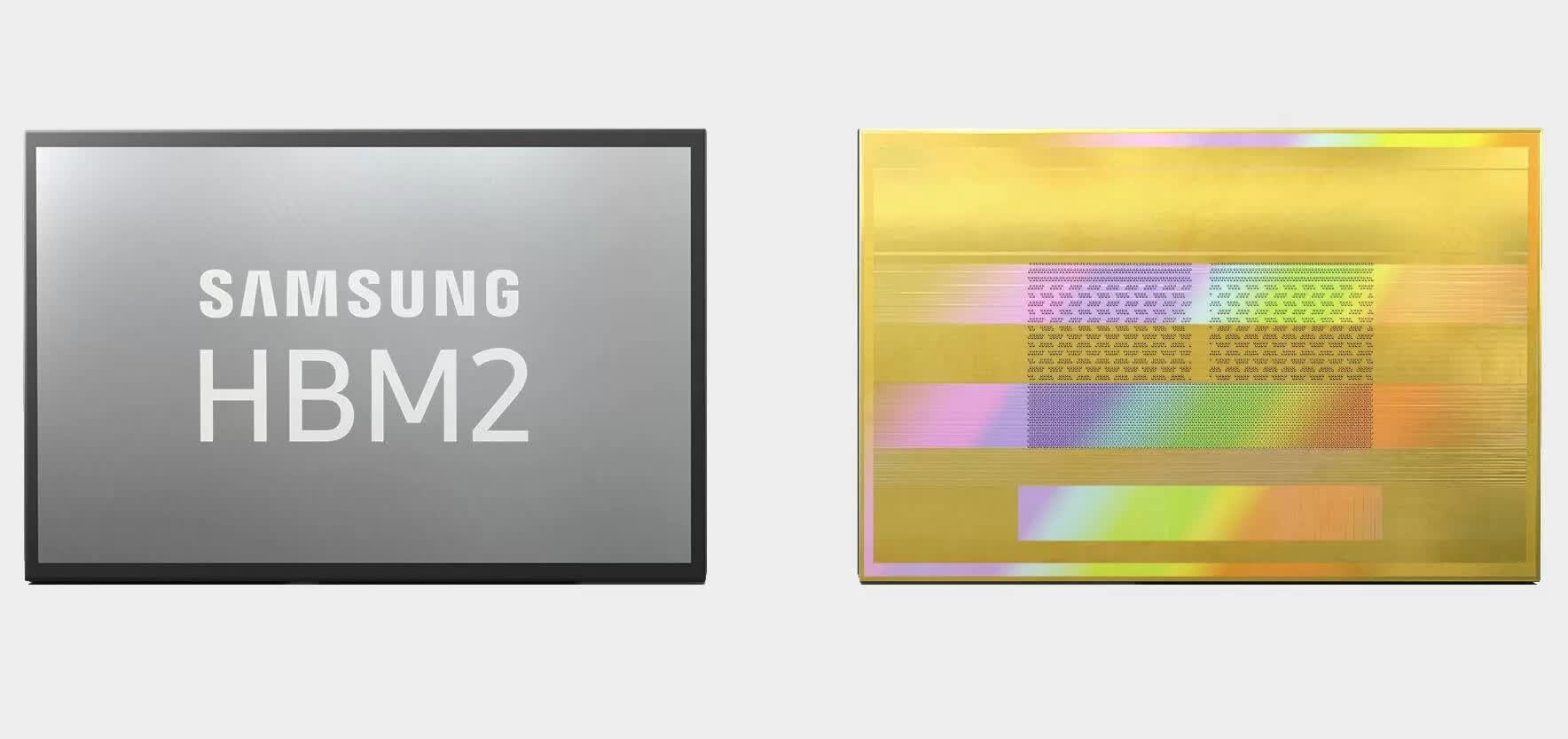In context: As manufacturers continue to squeeze every last drop of performance out of current GDDR6 and GDDR6X memory modules, Samsung has announced a new and improved entry to the family --- GDDR6W. Samsung claims that GDDR6W can compete with HBM2's bandwidth and speeds.
In 2016, Samsung and other producers began manufacturing the successor to the fast (but flawed) high-bandwidth memory (HBM) modules. High-bandwidth memory 2 (HBM2) seemingly fixed all the issues with the previous generation, increasing capacity, speeds, and bandwidth. Unfortunately, HBM2 was never significantly successful in the desktop graphics card market.
Fury and Vega lines of cards utilized HBM and HBM2, respectively. Sadly, each flopped, and AMD reverted to GDDR6 memory again, starting with the RX 5000 lineup. Some users were understandably disappointed about the quick abandonment of HBM2.
On Tuesday, Samsung revealed its latest entry to the GDDR6 family, GDDR6W. The South Korean tech giant wanted to bring some of the benefits of HBM2 to the already successful GDDR6 platform, especially the increased bandwidth. Based on the details and numbers Samsung provides, GDDR6W could be a game changer in future GPUs.

Samsung put a heavy emphasis on virtual reality and "Metaverse" applications. However, there's no reason that GDDR6W wouldn't bring benefits to future discrete graphics cards in general.
Samsung started by taking its existing GDDR6 platform and implementing what it calls "Fan-Out-Wafer-Level Packaging" (FOWLP). Rather than placing the memory dies on a PCB, they are mounted directly onto a silicon wafer. Redistribution layers allow for "finer wiring patterns," and since no PCB is involved, the modules will be thinner overall and have better heat dispersion.

"Since it can be equipped with twice as many memory chips in an identical size package, the graphic DRAM capacity has increased from 16Gb to 32Gb, while bandwidth and the number of I/Os has doubled from 32 to 64. In other words, the area required for memory has been reduced 50% compared to previous models."
These changes to module placement and overall die size result in GDDR6W being 36% shorter than its GDDR6 counterpart. Due to the unchanged footprint, these modules could be "put into the same production processes" used in current GDDR6 products.

As seen above, GDDR6W's bandwidth comes very close to that found on HBM2E dies. The current GDDR6X's bandwidth limit sits at around 1 TB per second, and GDDR6W significantly bumps that by about 400 MB/s.
While we almost certainly will not see GDDR6W on any Lovelace or RDNA3 graphics cards, there's always a chance Nvidia or AMD will take a swing at the other and adopt GDDR6W in an upcoming generation. Regardless, Samsung's new creation is a big step forward for graphic processors, whether discrete or "for the Metaverse."
